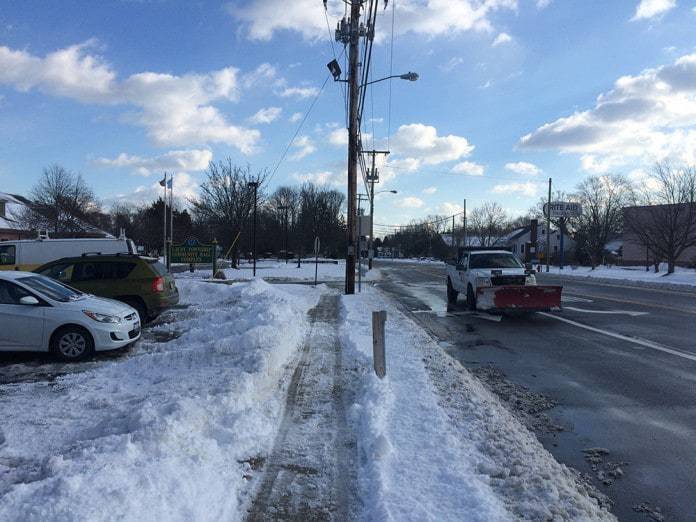
TRENTON – With a winter snowstorm approaching tonight and into Thursday, the Division of Highway Traffic Safety is reminding people that if they must drive during the storm to make sure they proceed slowly and safely.
“With a significant winter storm approaching, now is a good time to remind motorists to be exceedingly careful when venturing out on New Jersey’s roadways during snowy and icy conditions,” said Attorney General Christopher S. Porrino. “We urge anyone who must drive to respect the conditions of the road, be careful and be safe.”
“Motorists can lose control of vehicles without much warning when icy conditions exist on our roadways,” said Gary Poedubicky, Acting Director of the Division of Highway Traffic Safety. “It’s better to stay off the roads during heavy snows, but if you have to leave your home, take the proper precautions.”

The Division offers tips for driving in bad winter weather:
Drive slow (at or below the posted speed limit) and adjust your speed for the changing road conditions.
Turn on your headlights, using low beams when traveling in snow.
Increase your following distance. In winter weather, travel at least eight to 10 seconds behind the car in front of you.
Give snowplows plenty of room to work. Don’t tailgate and try not to pass. If you must pass, take extreme caution in doing so. Remember, a snowplow operator’s field of vision is restricted. You may see them, but they don’t always see you.
If you skid, don’t brake or accelerate. Remove your foot from the gas, and gently steer your car in the direction of the skid (the direction the rear of your vehicle is sliding.) When your car starts heading in the desired direction, carefully straighten the wheel.
Slow down before exiting the highway. Exit ramps often have icy patches, sharp curves and stalled or stopped vehicles.
Have a personal safety kit easily accessible in your vehicle that includes: an ice scraper/brush; shovel; jumper cables or battery starter; blanket; sand, salt or kitty litter for traction; lock de-icer; flashlight and new batteries; extra windshield wiper fluid; safety flares/warning device; cell phone with spare battery; water and non-perishable food (i.e., granola or protein bars); and paper towels or a cloth.
If your vehicle does become disabled, pull off the road as far as possible and turn on your emergency flashers. Remain with your vehicle until help arrives. If you can’t get your vehicle off the road and are uncertain about your safety, do not stay in your vehicle or stand behind it. Proceed carefully to a safe location away from traffic.
In addition, drivers should remember to remove all ice and snow from their vehicles before driving, especially from the hood, windows and roof. It’s the law in New Jersey. Motorists who fail to do so face fines of $25 to $75 for each offense, regardless of whether the ice and snow is dislodged from the vehicle.
If flying ice or snow causes property damage or injury to others, motorists face fines of $200 to $1,000 for each offense. There are approximately 500 fatalities in the United States per year due to icy road conditions.






